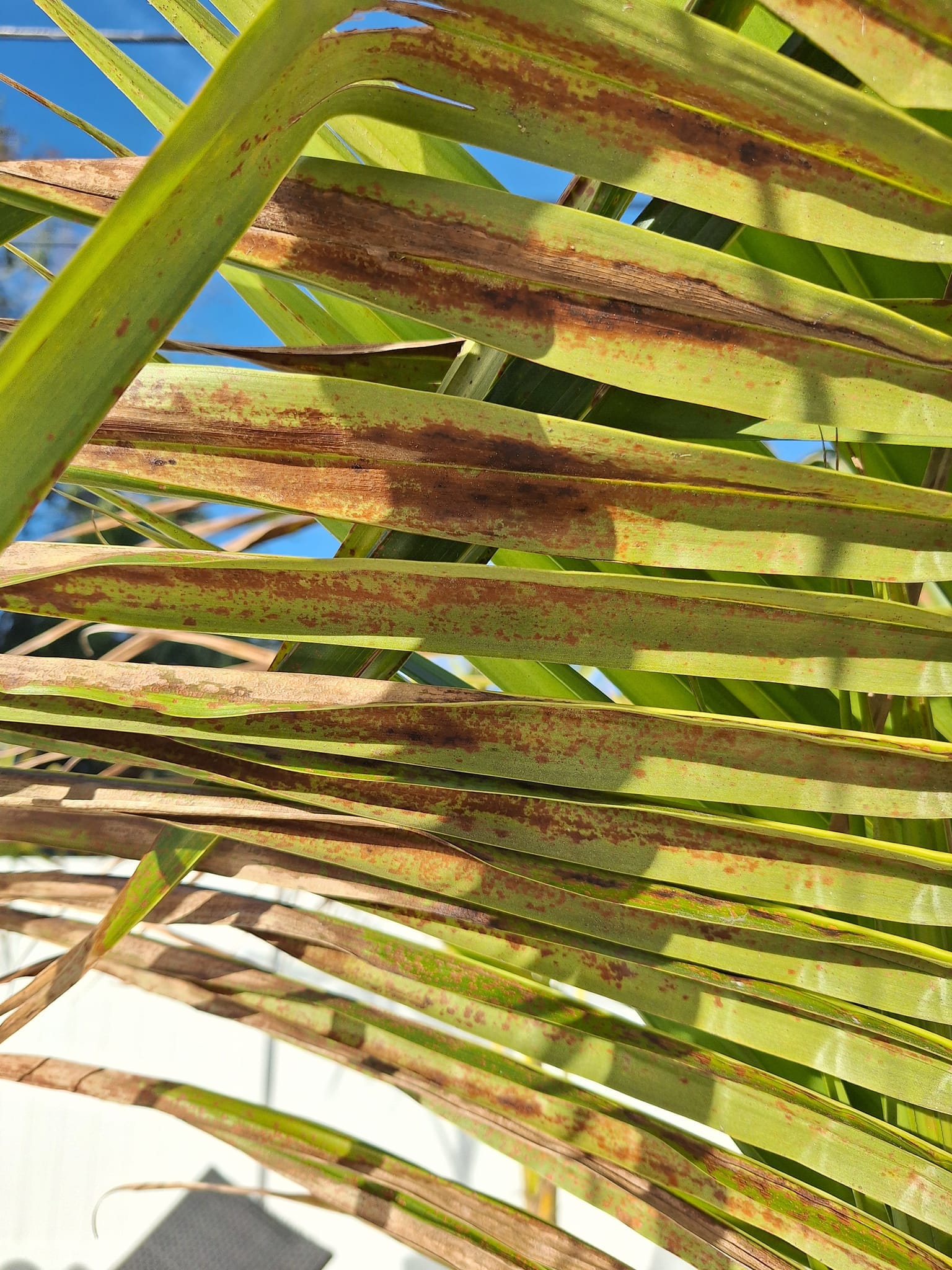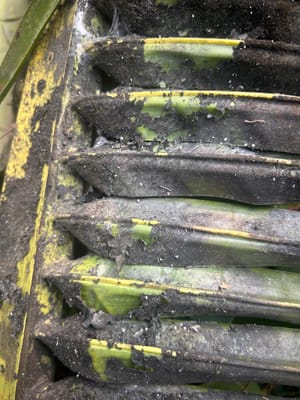
The Coconut Palm tree is considered to be a hardy tropic plant. I witnessed one of my coconut palm tree fronds turning brown. I tried hard to find the reason and took the necessary steps to cure it. This is a guide to finding the actual reason behind why coconut palm fronds turn brown and how to cure it.
The reason for my coconut palm tree's leaves turning brown might not be the same as yours. I will share most of the possible reasons and the treatments depending on the type of brown leaves you are seeing.
You don't have to look at all the reasons I am mentioning here. As you are caring for your plant, you can easily pick the reason and treat it accordingly.
To make it easier for you to find the specific reason, I will show the reasons based on symptoms.
The most possible reasons and the treatments - Brown leaves of coconut palm
- If planted in pots. (smaller)
- The soil is too dry.
- Salt stress (I know they are salt tolerant)
- Sudden cold.
- Lack of some specific nutrition.
Don't get confused seeing multiple reasons. It's time to see the symptoms in table form.
| Cause | Symptoms |
|---|---|
| Lack of water | Brown tips or edges on leaves |
| Nutrient Deficiency | Yellowing or browning of leaf edges, tips, or brown spots |
| Fungal Infections | Brown or black spots on leaves |
| Lethal Yellowing | Premature browning and leaf death |
| Cold Damage (Sudden cold) | Browning leaves |
| Salt Stress | Leaf edges turn brown and crispy (Just like wind burn) |
Now I will explain each point in easy words. ( My goal is just to explain to you why and how )
If planted in pots
Do you know that coconut palm trees can reach 100 feet tall? (Unless you go for a dwarf variant)
Pots are not ideal for planting a coconut palm. Even a bigger pot might be small for a coconut tree at some point.
They love to suck a lot of essential nutrients from the sandy soil. The roots of the coconut palm tree don't like being waterlogged. This is why they grow well in sandy soil. This tree needs a lot of water but with a good water drainage system in the soil.
All these reasons make this plant inappropriate to be planted in a pot.

Coconut palm tree is not good at tolerating repotting stress.
Lack of water
I have already told you that this palm tree demands a lot of water. After planting in the first year you need to water it well. If you notice dry soil, water it.
Don't do overwatering, which can lead to root rotting.
Instead of the center of the leaves, only the tips and edges will turn brown due to lack of water in the soil.
Treatment: Water frequently in the first year of planting maintaining the good water draining in the soil.
Fungal infections
If you notice brown or black spots on the leaves, take a closer look at the spots.
If any whitish stuff around the brown spots or black fungus-like spots is found, you can confirm it to be a fungus infection.
If you rub the spots, in most cases, the whitish or blackish fungus might attach to your finger.
Due to the high humid climate and poor air circulation, fungal infection spread rapidly.
Treatment: You can apply fungicides (as per the instructions) that are specially made for palm trees.
Sudden cold
As this is a tropical palm tree that loves to grow in tropical climates, you can't expect it to perform great in colder climates.
Even in warmer climates, in winter times, due to sudden cold, it shows brown leaf spots. Just like the below picture:

Treatment: Do nothing. Yes, you heard me right. This is a normal environmental stress and it will be recovered once it gets used to the cold times. It will grow nice when temp. gets warmer.
Nutrient Deficiency
Due to the lack of potassium, magnesium, or manganese in the soil can turn the leaves brown and dry.
There is a well-known disease that comes along with manganese deficiency - Frizzle Top disease. (mostly in date palms)
If you notice brown leaves and yellow leaves at the same time, then feed your tree.
Treatment: 8-2-12 every 3 months and Epsom salt.
I am not going to talk about lethal yellowing as this post is only about brown leaves. Lethal yellowing is a serious issue that is hard to treat. Will talk about it some other day.
Salt Stress
Coconut palm trees can tolerate salt levels in the soil or salt water sprays from the ocean or floods at a certain level.
On excessive amounts of soil, it can show brown spots on the leaves.
If you notice the leaves are turning brown after hurricanes or heavy storms, you can blame salt stress.
Treatment: Water water and water! Spray clean fresh water on the leaves. Water the soil thoroughly to dilute the excessive salt. Then it will go deep down with water.
You can check these: How to save plants flooded by saltwater and post-hurricane windburn - what to do
Good luck!
Loved what you read? Let me know you liked it by subscribing to this site for Free!






